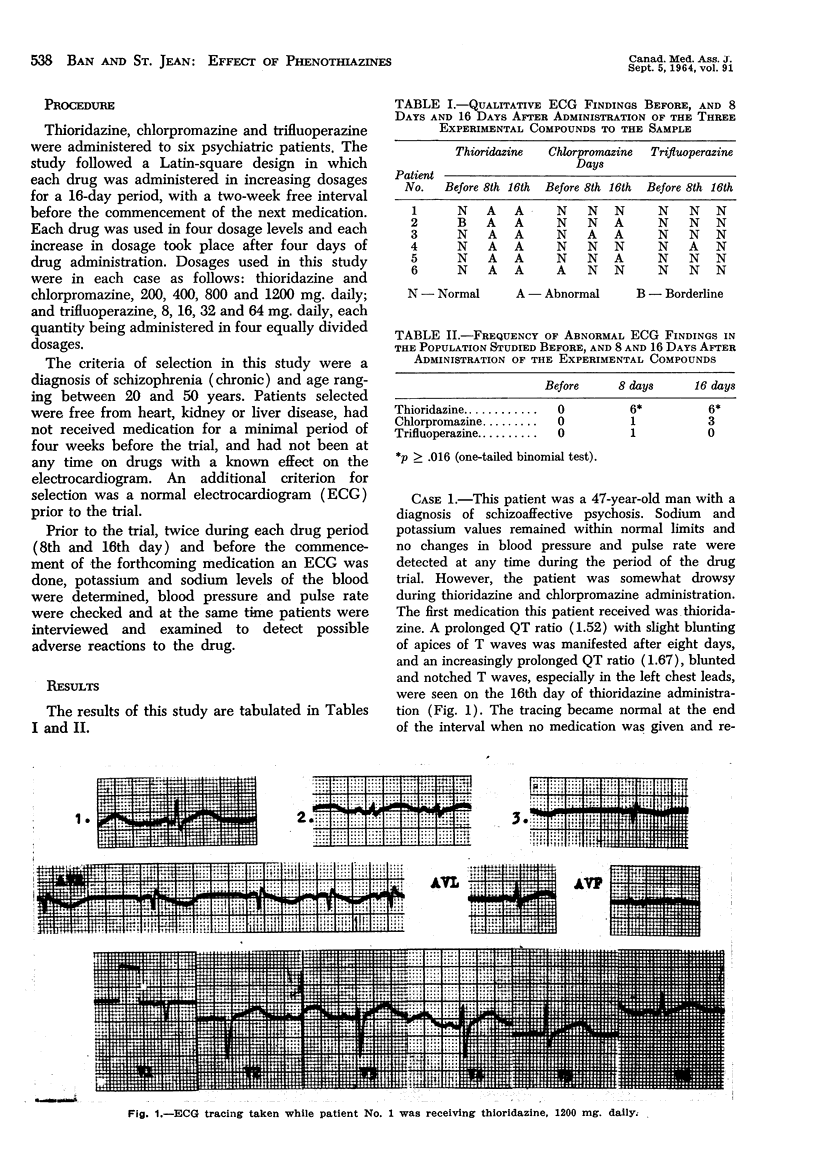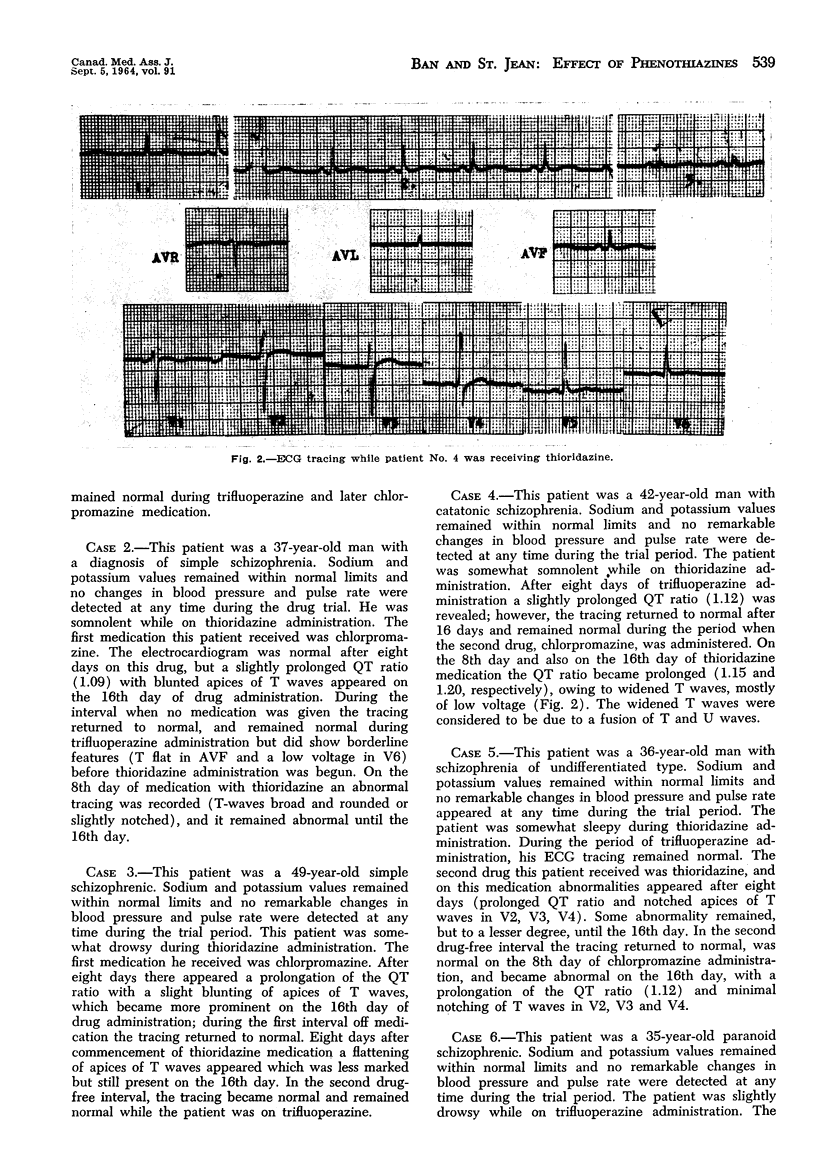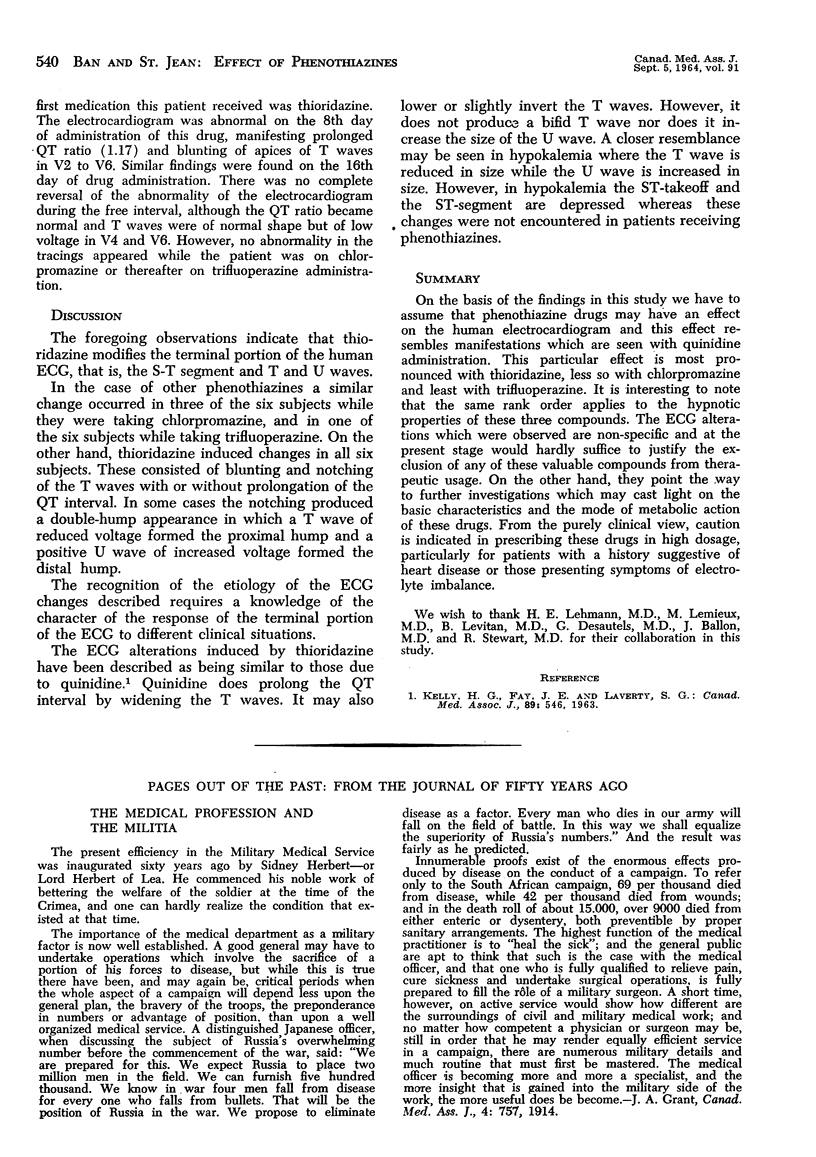Abstract
Thioridazine, chlorpromazine and trifluoperazine were administered to six psychiatric patients. Each was used in four dosage levels (thioridazine and chlorpromazine: 200, 400, 800 and 1200 mg. daily; trifluoperazine: 8, 16, 32, 64 mg. daily); and each increase in dosage was effected after four days of drug administration.
Before the trial, twice during each drug period and before commencement of the next dose regimen, an electrocardiogram (ECG) was recorded. The findings indicated that thioridazine modifies the terminal portion (S-T segment, T and U waves) of the human ECG. A similar change occurred in three of six subjects while taking chlorpromazine and in one of six while taking trifluoperazine. Thioridazine induced changes in all six subjects studied, viz., blunting and notching of T waves with or without prolongation of QT interval. In some the notching produced a doublehump appearance in which a T wave of reduced voltage formed the proximal hump and a positive U wave of increased voltage formed the distal hump.
Thioridazine-induced alterations in the ECG have been described as resembling those caused by quinidine; they also resemble changes associated with hypokalemia.
Full text
PDF



Images in this article
Selected References
These references are in PubMed. This may not be the complete list of references from this article.
- KELLY H. G., FAY J. E., LAVERTY S. G. THIORIDAZINE HYDROCHLORIDE (MELLARIL): ITS EFFECT ON THE ELECTROCARDIOGRAM AND A REPORT OF TWO FATALITIES WITH ELECTROCARDIOGRAPHIC ABNORMALITIES. Can Med Assoc J. 1963 Sep 14;89:546–554. [PMC free article] [PubMed] [Google Scholar]




